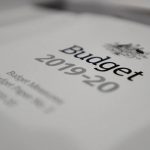How economic allies helped Australia evade China’s blockade

China’s campaign of economic coercion against Australia failed because of support from other Asian trading partners who turned to Australia to secure their energy supplies.
Japan, Korea, Taiwan and India—Australia’s second, third, fourth and fifth largest export markets—have each doubled their purchases of Australian goods since 2019, offsetting China’s attack on key export industries which began in 2020.
Exports to Vietnam and Indonesia have also more than doubled, while sales to the Philippines are up 82%.
However, Australia’s closest allies and AUKUS partners, the United States and the United Kingdom, were of little assistance while Australia faced a Chinese trade blockade, with their share of Australian exports dropping to the lowest level since the 1930s depression, in the case of the US, and forever for the UK. American exporters of beef, coal and timber exploited the Chinese embargo to seize Australian markets.
The reordering of Australia’s export markets has primarily been driven by demand for Australian coal and LNG. The disruption of global energy markets caused by Russia’s invasion of Ukraine resulted in shortages of both, sending prices soaring.
Japan’s purchases of Australian coal rocketed from $17.0 billion in 2019 to $57 billion last year while its imports of LNG rose 70% to $35 billion.
The increases in Korea over the same period were similarly phenomenal: coal purchases from Australia rose 140% to $17.2 billion, while its imports of Australian gas tripled to $13 billion.
Deprived of supplies of Australian coal, China, meanwhile, suffered ‘brown-outs’ in many cities in 2020 while its steel-making operations will have suffered from excessive use of inferior domestic coal, which shortens the lifespan of its coke ovens. China’s purchases of Australian coal went from $13.7 billion in 2019 to nothing last year. Coal was the first previously banned commodity that China started buying after the thaw in trade relations this year.
The transformation of Australia’s trade profile has been extraordinary. In 2019, before China initiated its campaign of coercion, Australia’s market in China was 81% greater than our combined sales to Japan and Korea, our second and third biggest markets. There was literally no contest to Chinese dominance.
By 2022, the combined Japanese and Korean markets were almost the same size as China’s, falling short by just 3.7%. The transformation in Australia’s trade profile is evident across Asia. The 10 biggest Asian trading partners, excluding China and Hong Kong, now import 80% more Australian goods than China. Three years ago, their combined imports from Australia were the same as China’s.
China has long used access to its markets as a tool to achieve political ends in foreign markets, ever since boycotts of US products were organised in the early 1900s to force change in what was then a racist US migration policy. The first academic study of China’s use of trade as a weapon was written in 1930.
In recent times, Norway, France, the Philippines, Japan and South Korea have all suffered Chinese boycotts. However, there has never been a campaign as large and targeted as the one it launched against Australia after the Morrison government called for an inquiry into the origins of Covid while China was still smarting over the foreign interference legislation, the banning of Huawei’s participation in 5G, and a clamp on Chinese investment.
Despite China’s discriminatory tariffs on wine and barley and its informal and WTO-illegal bans on coal, beef, lobster, cotton, wood, nickel and copper concentrates, its total purchases from Australia still rose by 16.6% over the three years from 2019, before the campaign started, and 2022. This was due mainly to the fast-rising price of Australia’s iron ore, which China’s steel industry cannot do without.
Having become far more reliant on Australia, it’s no wonder that Japan is now concerned about the spate of regulatory interventions into Australian energy industry, including threats to curb LNG exports and a big hike in Queensland’s coal royalties last year. There’s speculation that the resource rent tax on offshore LNG will be increased significantly in the May budget which, for the companies that built massive LNG plants under the current tax regime during the boom, could raise concerns of sovereign risk.
Japan’s ambassador to Australia, Shingo Yamagami, has repeatedly warned that confidence of Japanese investors Australia is in jeopardy. The Inpex LNG plant at Darwin is Japan’s largest single foreign investment. ‘It’s hard to imagine the neon lights of Tokyo ever going out, but with Australia now supplying 70% of coal, 60% of iron ore, and 40% of Japan’s gas imports, this is exactly what would happen if Australia stopped producing energy resources,’ Yamagami told an Inpex forum in March.
Leaders of Korea and India have also expressed concerns about their energy security to Prime Minister Anthony Albanese
Taiwan has overtaken both the US and India to become Australia’s fourth most important export market, with purchases in 2022 of just under $30 billion. Its purchases of Australian coal have leapt from $5.3 billion to $13.8 billion since 2019, while its imports of LNG have risen more than fourfold to $9 billion.
In common with Japan and Korea, Taiwan has also massively lifted its purchases of the grab-bag of ‘confidential items of trade’. These are goods for which the disclosure of country sales would supposedly endanger commercial secrets: they include everything from almonds to golf-balls, but likely mostly comprise alumina and concentrates for copper, nickel, and manganese. Between the three countries, these purchases have risen from $2.5 billion to $12 billion over the last three years.
The second biggest purchaser of Australian coal last year was India, with imports of $23 billion, up from $10 billion three years ago. Coal accounted for 80% of Australia’s sales to India last year. India has also become an important buyer of Australian gold, with sales rising from $266 million to $1.5 billion over the last three years.
While coal and LNG account for the greatest share of Asia’s increased appetite for Australian goods, other commodities targeted by China have also found ready markets elsewhere. Vietnam became the largest buyer of cotton with imports of $1.7 billion, up from just $115 million three years ago, while Indonesian purchases rose five-fold to $515 million. Japan’s purchases of barley rose by 140% to $508 million while there were big increases in wheat purchases across the region.
Without the need for Australia’s resources, the US, the UK, and New Zealand were of much less help in the face of China’s embargoes. Exports to the US did rise by 37% over the three years, mainly reflecting purchases of gold. Its share of Australian exports dropped to 3.3%, slipping from fourth to sixth place among Australian markets. New Zealand has dropped from eighth to 10th largest export market, while the UK now ranks 19th, taking just 0.5% of Australia’s exports. Until the 1950s, its share was over 40%.
Australia’s Asian export markets ($bn)
| 2019 | 2022 | % Change | |
|---|---|---|---|
| China | 148.4 | 173.0 | 17% |
| Japan | 56.7 | 115.4 | 103% |
| Korea | 25.3 | 51.2 | 102% |
| Taiwan | 12.8 | 29.8 | 133% |
| India | 14.1 | 28.8 | 105% |
| Singapore | 11.9 | 19.2 | 61% |
| Vietnam | 6.1 | 13.8 | 127% |
| Malaysia | 8.9 | 13.6 | 52% |
| Indonesia | 6.0 | 12.5 | 110% |
| Thailand | 4.5 | 8.0 | 80% |
| Hong Kong | 7.5 | 7.5 | -1% |
| Philippines | 2.8 | 5.1 | 82% |
Source: ABS.
This article was published by The Strategist.
David Uren is a Melbourne-based business writer and investor relations advisor. He has been writing about business for the past 25 years for publications including The Australian, The Age and BRW.














